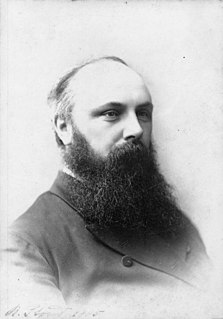Related Research Articles

The 1884 New Zealand general election was held on 22 July to elect a total of 95 MPs to the 9th session of the New Zealand Parliament. The Māori vote was held on 21 July. A total number of 137,686 (60.6%) voters turned out to vote. In 11 seats there was only one candidate.
Taranaki was a New Zealand parliamentary electorate that existed for three periods between 1881 and 1996. It was represented by nine Members of Parliament.
Awarua was a New Zealand parliamentary electorate from 1881 to 1996.
Wairarapa South was a New Zealand parliamentary electorate from 1881 to 1887.
Waitotara was a New Zealand parliamentary electorate in South Taranaki. It existed from 1881 to 1893, and again from 1978 to 1996. It was represented by four Members of Parliament.
Peninsula was an Otago electorate in the New Zealand Parliament from 1881 to 1893, based on the Otago Peninsula.
Kumara was a parliamentary electorate in the West Coast region of New Zealand, from 1881 to 1890.
Inangahua is a former parliamentary electorate in the Buller District, which is part of the West Coast region of New Zealand, from 1881 to 1896. The town of Inangahua Junction, which gave the electorate its name, was located in the adjacent Buller electorate until 1887.
Waihemo is a former parliamentary electorate in the Otago region of New Zealand. It existed for two periods and was represented by two Members of Parliament.
Geraldine was a former parliamentary electorate in the South Canterbury region of New Zealand that existed three times from 1875 to 1911. It was represented by six Members of Parliament.
Mataura was a parliamentary electorate in the Southland Region of New Zealand, from 1866 to 1946.
Wakanui was a rural parliamentary electorate in the south Canterbury region of New Zealand, from 1881 to 1887.
Lincoln was a parliamentary electorate in the Canterbury region of New Zealand from 1881 to 1890. It was represented by two Members of Parliament.
Hokonui was a parliamentary electorate in the Southland region of New Zealand, from 1881 to 1890.
City of Dunedin, during the first two parliaments called Town of Dunedin, was a parliamentary electorate in Dunedin in Otago, New Zealand. It was one of the original electorates created in 1853 and existed, with two breaks, until 1905. The first break, from 1862 to 1866, was caused by an influx of people through the Otago Gold Rush, when many new electorates were formed in Otago. The second break occurred from 1881 to 1890. It was the only New Zealand electorate that was created as a single-member, two-member and three member electorate.
Dunedin East was a parliamentary electorate in the city of Dunedin in the Otago region of New Zealand from 1881 to 1890.
Roslyn was a parliamentary electorate in the city of Dunedin in the Otago region of New Zealand from 1866 to 1890.
Oamaru was a parliamentary electorate in the Otago region of New Zealand, during three periods between 1866 and 1978.
The 8th New Zealand Parliament was a term of the New Zealand Parliament.
The 9th New Zealand Parliament was a term of the Parliament of New Zealand.
References
- McRobie, Alan (1989). Electoral Atlas of New Zealand. Wellington: GP Books. ISBN 0-477-01384-8.
- Wilson, James Oakley (1985) [First published in 1913]. New Zealand Parliamentary Record, 1840–1984 (4th ed.). Wellington: V.R. Ward, Govt. Printer. OCLC 154283103.